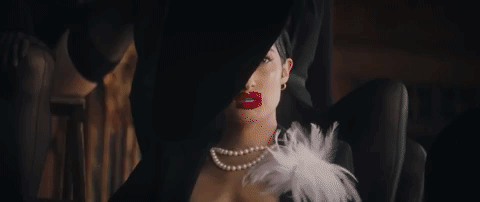
READ MORE: To make it as an artist you have to be an entrepreneur (Elle Griffin)
To be operators in the creator economy, every creator needs to think of themselves as a creative entrepreneur.
“I make art because it makes me happy to be an artist,” says author Nishant Jain. “But I’m only able to sell art because I think of it as a business.”
Jain is the author of SneakyArt, a newsletter in which he secretly draws the world and shares all of his thoughts about it. In conversation with Elle Griffin at Substack, they discuss the tension between making art and making a living doing it.
They both believe that being a creator in the creator economy is all very well, but if you want to make a living out of it then you’d better get creative with your business strategy too.
“This means I have the responsibility to understand my market and decipher what kind of products it will want,” Jain explains. “I cannot demand that people buy my work simply because I have put so much effort into it — I am entitled to nothing. My work and my effort is simply the supply end of the curve. To make a sale, it is also my job to create the demand.”
CRUSHING IT IN THE CREATOR ECONOMY:
The cultural impact a creator has is already surpassing that of traditional media, but there’s still a stark imbalance of power between proprietary platforms and the creators who use them. Discover what it takes to stay ahead of the game with these fresh insights hand-picked from the NAB Amplify archives:
- The Developer’s Role in Building the Creator Economy Is More Important Than You Think
- How Social Platforms Are Attempting to Co-Opt the Creator Economy
- Now There’s a Creator Economy for Enterprise
- The Creator Economy Is in Crisis. Now Let’s Fix It. | Source: Li Jin
- Is the Creator Economy Really a Democratic Utopia Realized?
Jain sells art through private commissions and print and book sales. He uses Reddit and Instagram to reach potential new customers and earns revenue from the SneakyArt Podcast.
“With every episode, he includes a 45-second pitch for why listeners should ‘buy me a coffee’ to support my work and it works well. I started the subscription model on the newsletter during the Substack Grow program in September 2021, and that is also doing reasonably well, all things considered.”
The aspect of creative entrepreneurship that appeals most to Jain and Griffin is the independence it implies. It invites them to think of their work as a business but on their own terms — “unlike Instagram deciding to change its algorithms abruptly and forcing me to pivot. I pursue my art and writing with a creative drive that fulfills me,” Jain says. “But crafting products from these creative pursuits that people will want to pay for is another kind of creative challenge. The game is a little different, but it is a lot of fun to play.”
“When I think of the entrepreneurial side, I think of the many roles that previously needed to exist in the immediate environment of a successful artist. Today, instead of being performed by other people, they are being performed by the artists themselves — and for the most part, I see this as a good thing, because I like having that kind of control. In fact, most of what we see as problems in the creator economy are really just a matter of perspective.”
— Nishant Jain
But is there a tension between art and commerce?
Jain says that his “entrepreneurial side” gathers feedback and generates ideas for the artist in him. “I believe the two need to be in that kind of symbiotic relationship for both to grow and thrive. This is not possible if we think of one as inferior to the other.
“When I think of the entrepreneurial side, I think of the many roles that previously needed to exist in the immediate environment of a successful artist. Today, instead of being performed by other people, they are being performed by the artists themselves — and for the most part, I see this as a good thing, because I like having that kind of control. In fact, most of what we see as problems in the creator economy are really just a matter of perspective.”
As an entrepreneur, Jain figures that his main job is to create an environment in which the creator can thrive. In the newsletter, for example, he centers his art and writing and nurtures their appeal with a free and paying audience.
“I am very conscious of not straying so far in my entrepreneurship that the art is rendered unnecessary or after the fact,” he adds.
He reframes these issues for prospective artist-entrepreneurs:
Problem: Every artist has to be a brand manager.
Different perspective: Every artist has the freedom to create a brand around their work.
Problem: The artist has to do the job of building their audience.
Different perspective: The artist is able to reach their potential audience directly, without gatekeepers.
Problem: Nobody helps the artist make sales.
Different perspective: With access to their own audience, the artist is able to make direct sales and get instant customer feedback which helps improve their work. And they keep 100% profits.
Problem: The artist must handle their own promotion.
Different perspective: The artist has control over their image.
Problem: There is too much competition on Instagram.
Different perspective: There are so many artists that being successful is not about being the best.
Problem: There is no formula for success as an artist.
Different perspective: There is no formula for success as an artist.

